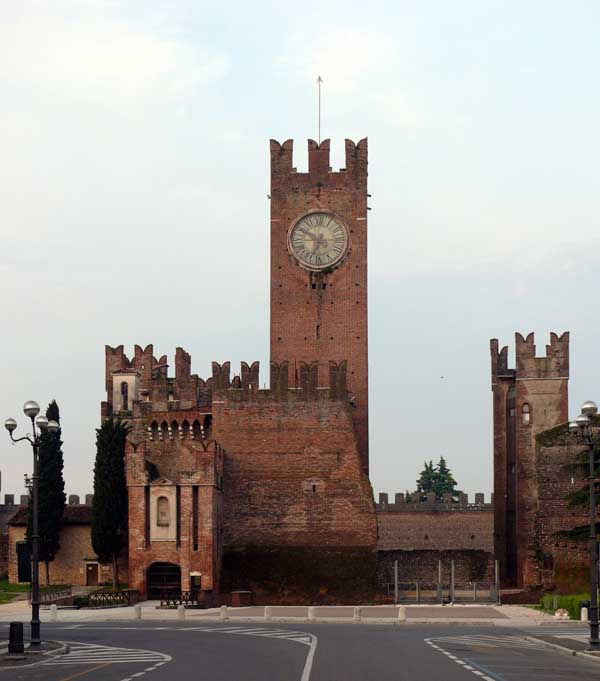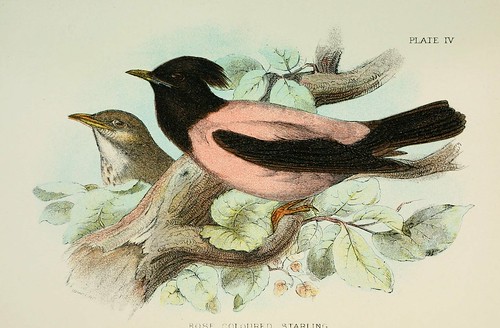Birders all across western Europe — and yes, some die-hards in North America, too — are always on the lookout for this fancy bird, which occasionally moves west, far west, of its Asian and east European range. My VENT group in Catalonia last year was fortunate enough to discover an adult near Barcelona, but we can’t really hope for pink lightning to strike twice.
It’s not impossible, though, as the astonishing Italian incursion of June 1875 shows. The gentleman-naturalist Edoardo de Betta wrote:
The rosy starling arrived in Villafranca on June 3. Around 4:00 pm on that day a small flock of 18 to 20 of these birds perched on the high, crumbling interior walls of the fortress, and was followed half an hour later by a second flock of about 100 individuals; their constant vocalizing drew the attention of everyone living inside the fortress bounds…. Towards evening, still more, thousands and thousands, of these starlings appeared, and joining those that had preceded them, remained until dark, at which point they all flew out and scattered through the open countryside in very many flocks.
The gathering human crowd was unhappy that these “strange and beautiful birds, which they had now seen for the first time in their lives,” should disappear so promptly.
But around 3:00 the next morning, the residents of Villafranca were unexpectedly awakened by the deafening calls of twelve to fourteen thousand rosy starlings that had arrived to take definitive possession of the fortress….

Wikipedia, by Ugo Franchini
Five days later, the starlings commenced their breeding activities, to the delight of the human residents:
Copulation was undertaken with unbelievable ardor, atop the fortress walls and the roofs of the houses; these birds proved so concupiscent that they lingered in their embrace even if they accidentally fell from their high perches, with the result that it was easy for all the people to obtain some as the birds fell in pairs to the street below.
Some “speculators” made hundreds of lire by selling those birds on what seems to have been a very lively black market centered on the Villafranca train stataion.
The surviving pairs went about their business, and by July 10 all the nestlings were entirely feathered. Four days later, the adults and their newly fledged young all left Villafranca for sites to the south. But de Betta reports that they left behind them a three-fold legacy:
The birds carried out an immense massacre of the locusts in the agricultural fields; they were a source of great fortune for a few clever entrepreneurs; and finally, what matters most to us, they added an entirely new chapter of the greatest significance to the history of Italian birds.
I would like to have seen that.


